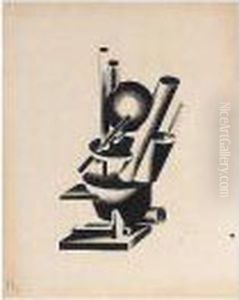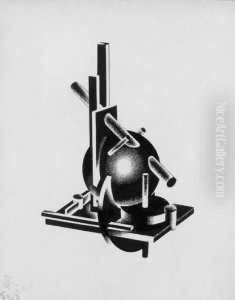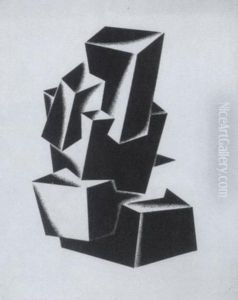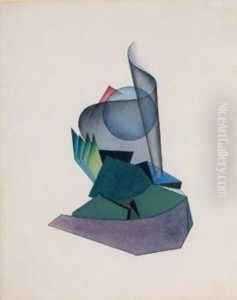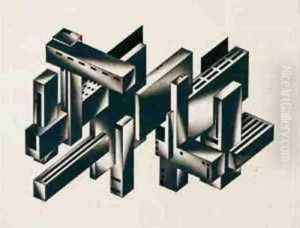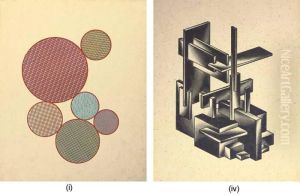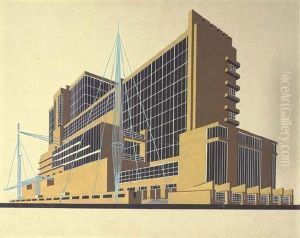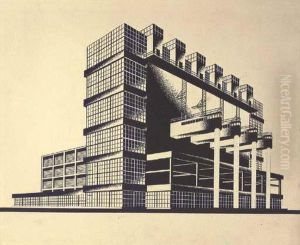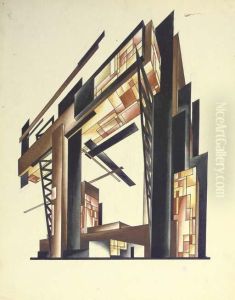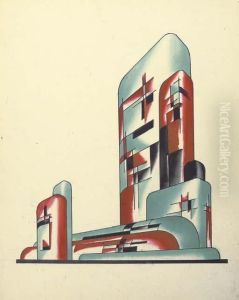Iakov Chernikhov Paintings
Iakov Chernikhov, a groundbreaking Soviet architect and graphic artist, was born on December 17, 1889, in Pavlograd, Yekaterinoslav Governorate, Russian Empire (now Dnipro, Ukraine). He is most celebrated for his visionary architectural drawings and theoretical work, which exerted a significant influence on the development of modern architecture and design beyond the confines of his own time and the Soviet Union. Chernikhov's education began at the Odessa Art School, followed by his studies at the Imperial Academy of Arts in Saint Petersburg, where he graduated in 1925. During his time at the academy, he was deeply influenced by the avant-garde movement, which was vibrant in post-revolutionary Russia. His work from this period reflects a fascination with the possibilities of new forms and technologies, blending elements of Constructivism, Futurism, and Suprematism. After completing his education, Chernikhov worked as an architect and teacher, balancing professional practice with academic engagements. He authored several influential books on architecture and design theory, including 'The Construction of Architectural and Machine Forms' (1931), which showcased his innovative approach to architectural form and composition. His theoretical works and architectural fantasies were prolific, comprising over 17,000 sketches that explored a wide range of architectural possibilities, from fantastical structures to practical urban design solutions. Chernikhov's contributions to architecture were not limited to theoretical explorations. He also engaged in practical architectural work, though fewer of his designs were constructed. His teachings and theoretical writings, particularly on the art of architectural drawing and composition, have left a lasting legacy, influencing not just architects but also artists and designers in various fields. Despite the recognition of his work within professional circles during his lifetime, it was only after his death in Saint Petersburg, Soviet Union, on May 9, 1951, that Chernikhov's visionary projects gained wider recognition, cementing his status as one of the most innovative architects of the 20th century.
